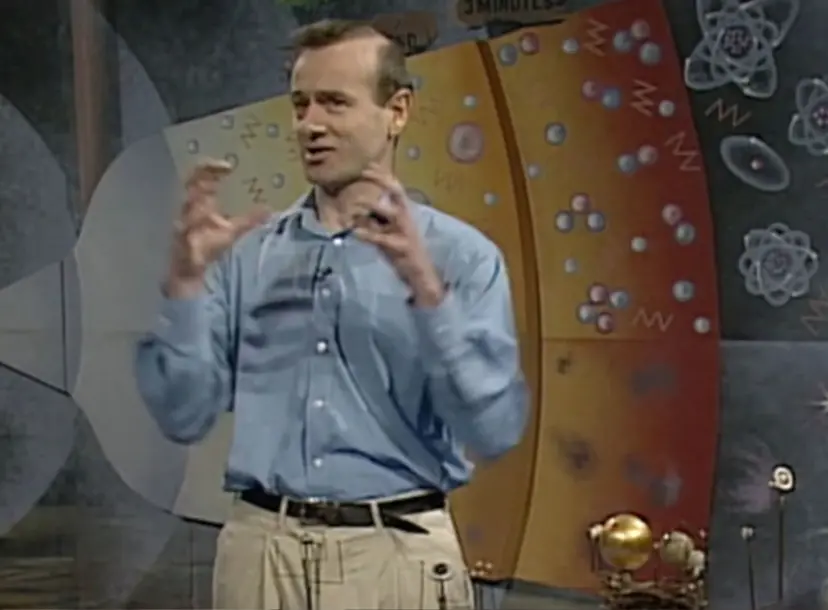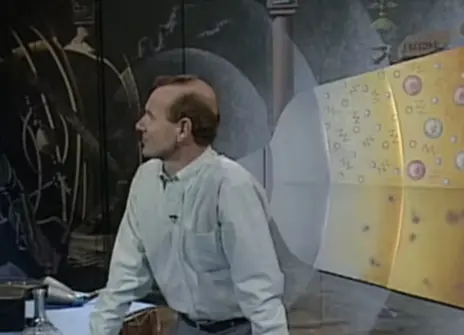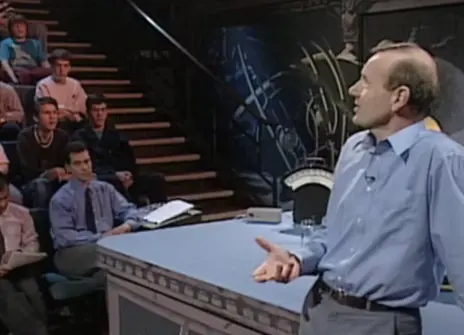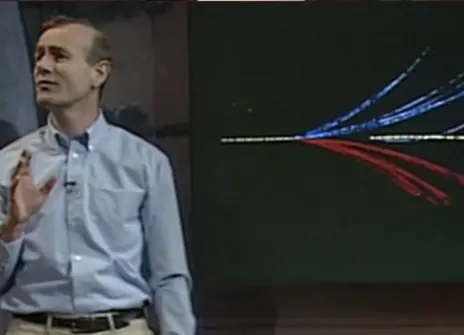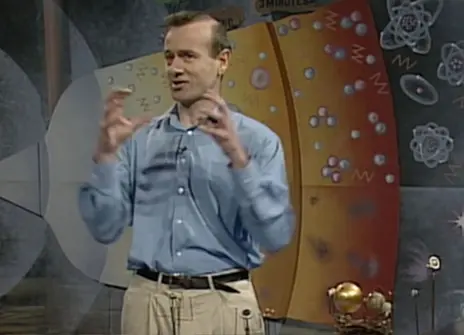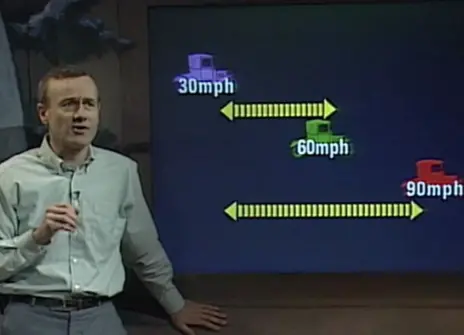Lecture 4 – Antimatter matters
From the 1993 Lecture programme:
100 metres below ground, among the fields north of Geneva, is the world’s largest scientific instrument – the LEP (for Large Electron Positron collider). Beams of electrons and their antimatter counterparts – positrons – whirl around a 27km racetrack at near to the speed of light. Suddenly they smash head on into each other producing in a small volume the hottest place on Earth, hotter even than the centre of the Sun and hotter perhaps than anywhere in the Universe since the original Big Bang.
When matter and antimatter meet they may mutually annihilate and turn into a fireball of radiation – Space travellers to anti-galaxies beware! Antimatter sounds like the stuff of science fiction, but it is a very real part of the Universe. Although all bulk material is made of matter, (good news for future astronauts) individual pieces of antimatter arrive in cosmic rays and we can now produce large quantities for use in experiments. Antimatter is even used as a medical diagnostic.
Collisions between matter and antimatter happened everywhere in the first fractions of a second of the Big Bang. By reproducing these conditions at LEP we can learn how the material ingredients of the Universe were formed and discover the fundamental modus operandi of nature.
In order to capture the images of these cataclysmic collisions, LEP contains four huge particle detectors. Each is bigger than a two storey house and weighs more than five jumbo jets; their surroundings look like something from the imagination of HG Wells and their sophisticated electronics produce fantastic visions. In this lecture we will visit LEP and go deep underground to see the experiment for ourselves.
About the 1993 CHRISTMAS LECTURES
In our 1993 CHRISTMAS LECTURES, particle physicist Frank Close OBE looks at how our understanding of particle physics developed over the 20th century.
From the 1993 Lecture programme:
The lectures will trace a hundred years of discovery and invention, culminating with a look into the crystal ball towards the next century. The developing story begins in 1893, when the Royal Institution lecturer inhabits a world ignorant of radioactivity, electrons and the working of atoms, knowing nothing of how stars shine, nor of galaxies let alone that they are rushing outwards from a primeval big bang.
Even so, scientists were confident that they were on the brink of describing all basic natural phenomena. Fundamental discoveries at the turn of the century changed all that. Hints that “all was not well” turned out to be true and revolutionary rather than requiring tinkering with a few ideas.
A century later, in 1993, one hears talk of a 'Theory of Everything' and there is debate as to whether we can 'know the mind of God'. Yet even now there are hints that 'all is not well'. The lectures will bring us to the current frontier and try to learn from the experiences of the intervening century of discovery and controversy.
The theme will show how discoveries of natural phenomena provide new tools that, in turn, open up new areas of research leading to further insights, innovation and technologies. The developments feedback, creating new opportunities which often are far removed from the original discovery. The net result is that we are continually extending and deepening our experiences of Nature beyond those accessible to our five senses.
Our five senses reveal the beauty of the everyday world, enabling us to look out to nearby stars, to focus on objects as small as the width of a human hair and to react to events as brief as 1/25th of a second. Many other animals have sharper senses than ours but our ingenuity and inventiveness in effect extend our senses with telescopes, microscopes and other sophisticated tools. Thus it is our 'sixth sense' that expands our watch on the Universe, reveals images deep within individual atoms and discovers Nature at work on timescales of less than a microsecond.
Telescopes on satellites above the atmosphere capture light that was born when the galaxies first formed. Experiments in high energy particle accelerators on Earth teach us how to decode these messages that reveal our origins: we are looking back to (nearly) the Big Bang.
At another extreme we can photograph and display the entire life of a single subatomic particle lasting a mere thousand millionth of a second – an essential part of Nature’s scheme but hidden from our five senses. As hieroglyphics contained the secrets of the Pharaohs, so do these modern pictographs from CERN begin to reveal the story of creation. Not only can we see how the stuff of the present Universe was formed, we also have clues to its possible fate.
